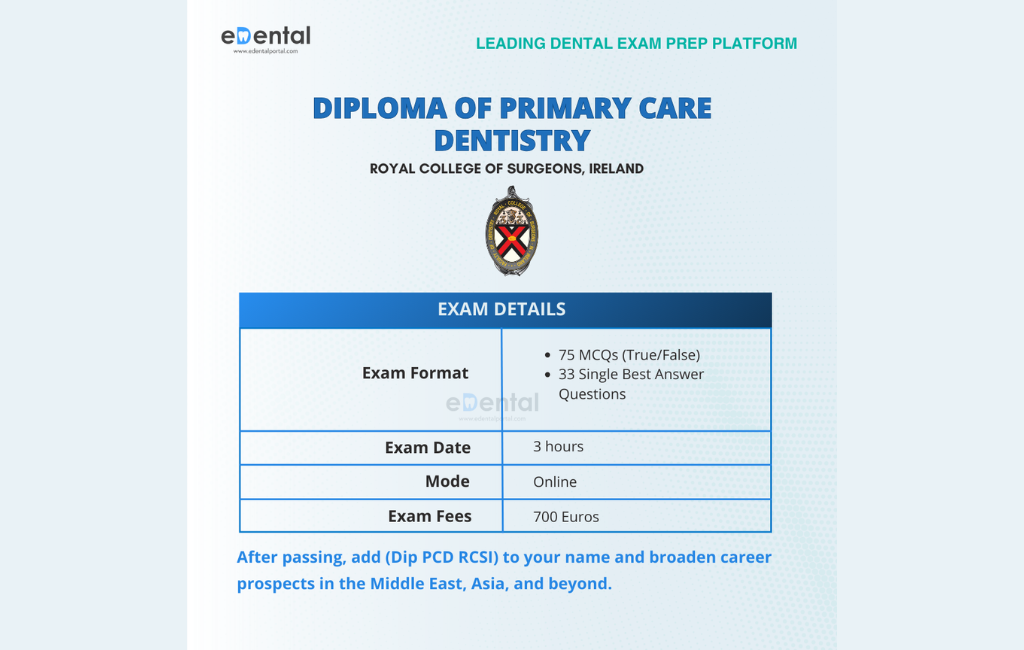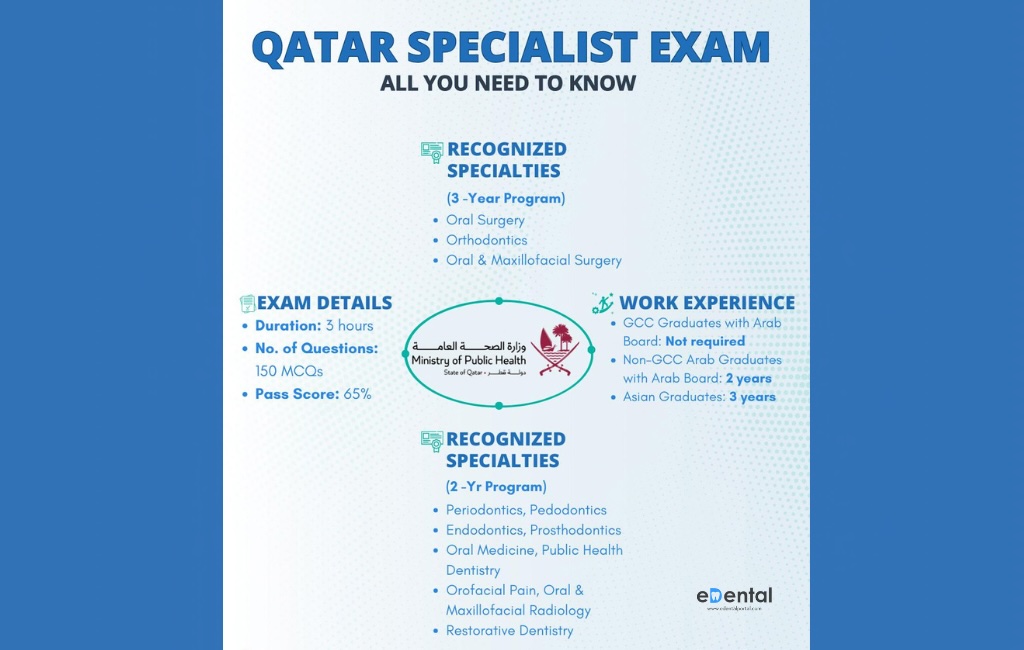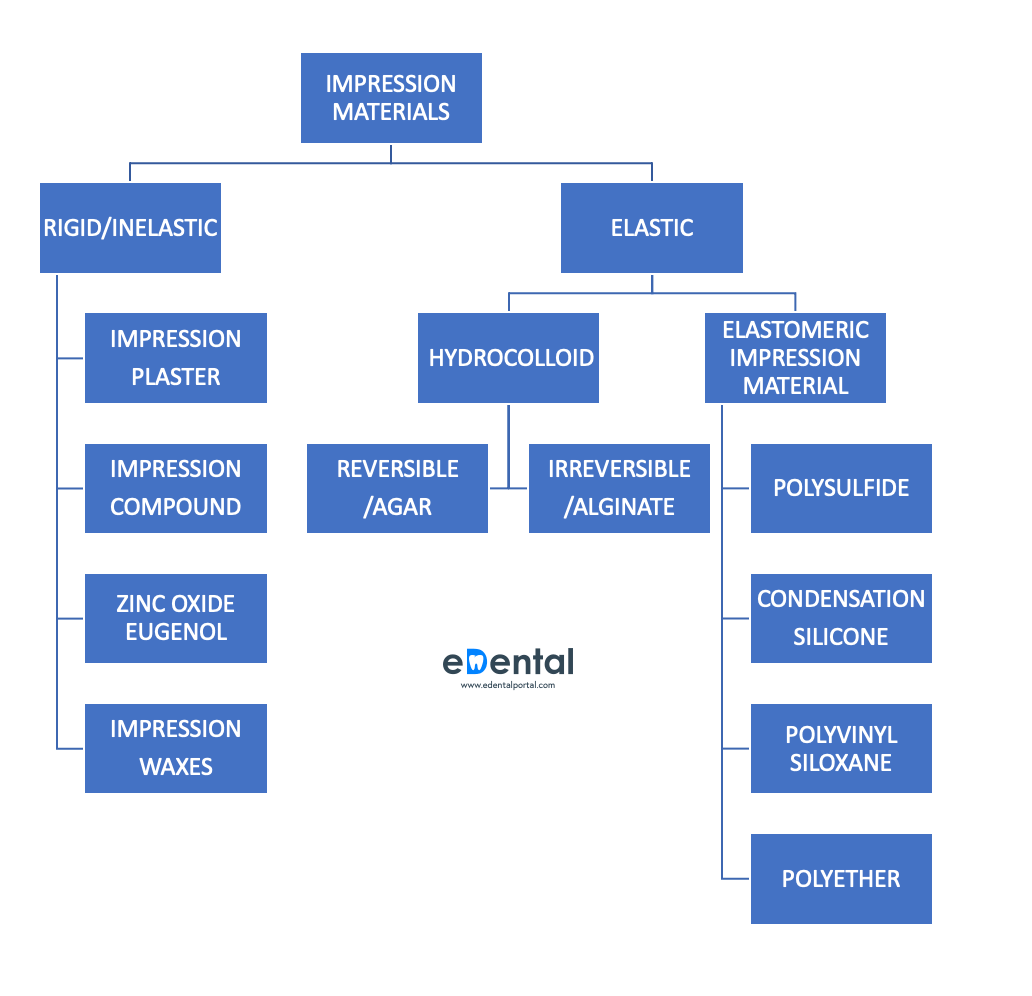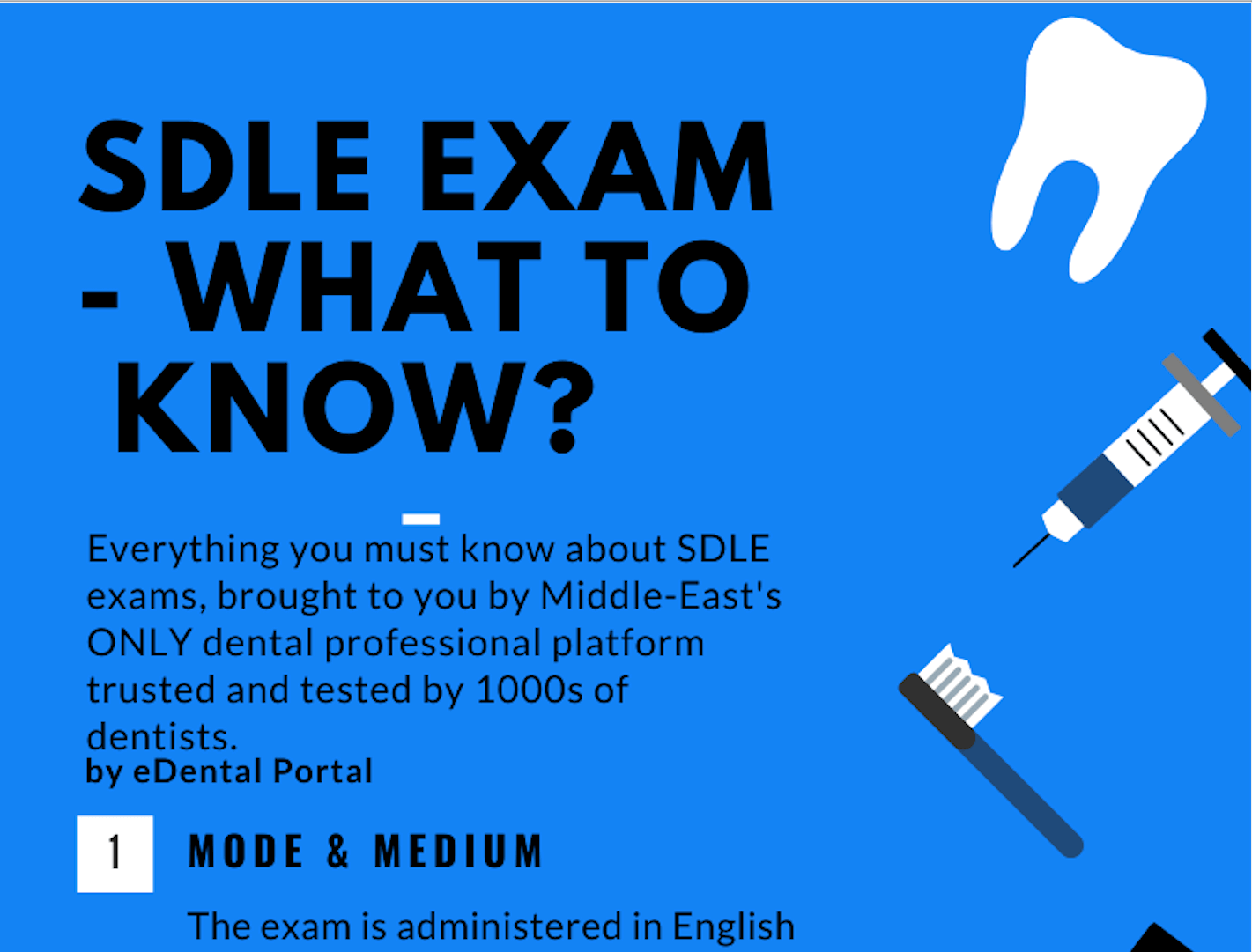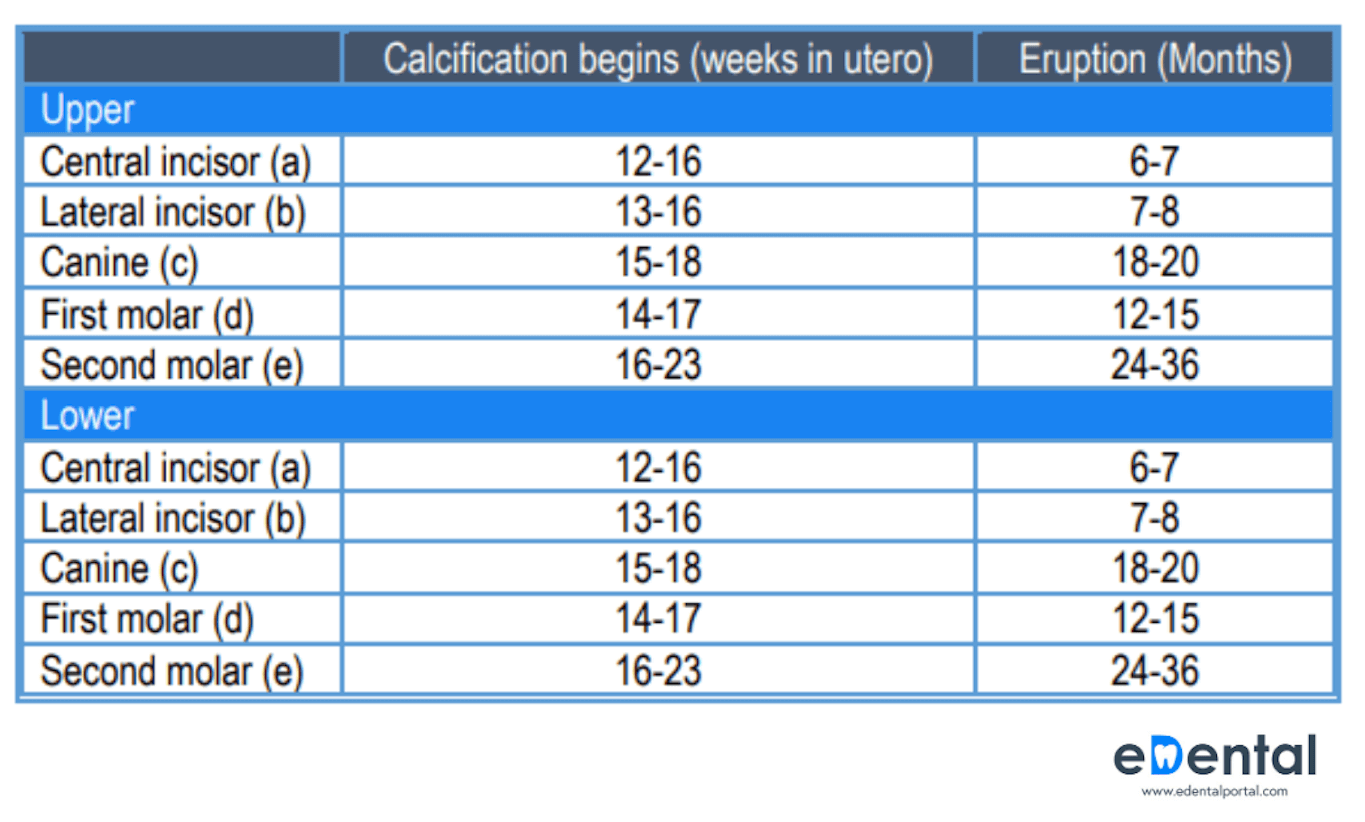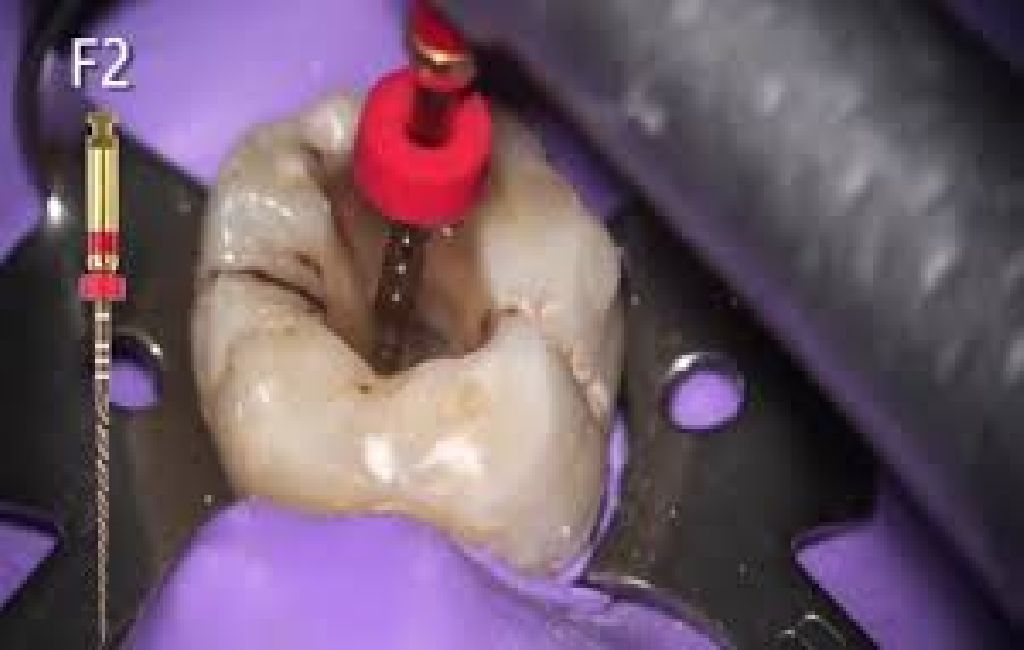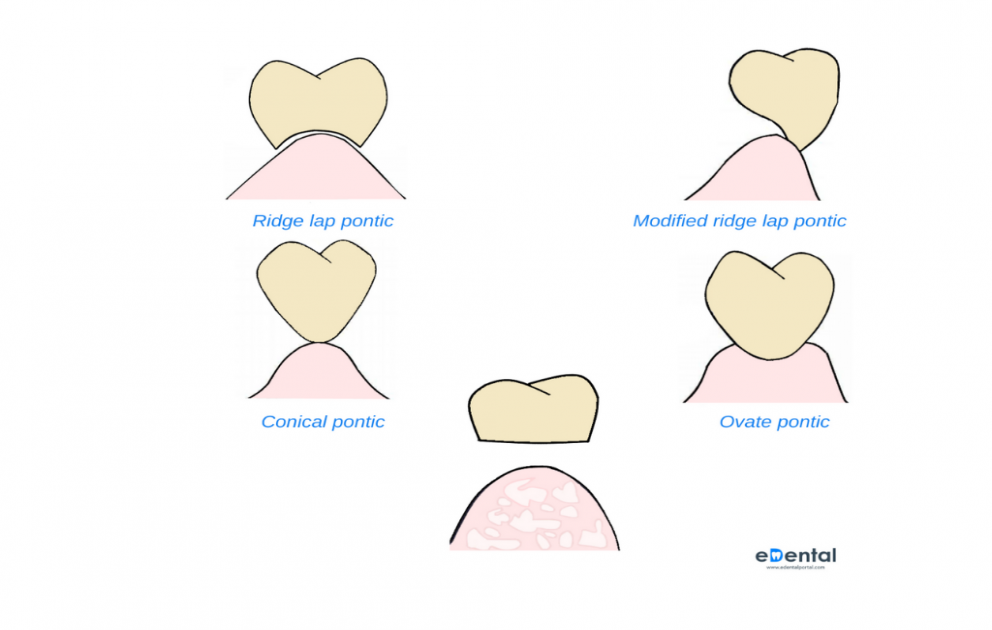
Types of Pontics in FPD
On 24-05-2021 | Read time about 4 Minutes
According to the Glossary of Prosthodontic Terms, a pontic is an artificial tooth on a fixed partial denture that replaces the missing natural tooth, restores its function and usually fills the space previously occupied by the natural crown. Pontics are classified
- According to material
- According to the methods of fabrication
- According to the ridge relation
Based on the amount of contact the pontic makes with the underlying mucosa. They are classified as:
Pontics with mucosal contact:
Pontics that are placed in contact with the mucosa are of different types. They include:
Ridge lap or saddle pontic:
These pontics overlap the buccal and lingual surfaces of the ridge. They form a large concave contact with the ridge.
Indication: these type of pontics are rarely used and used only in cases of high aesthetic demands.
Advantage: the buccal and lingual form of pontic simulate the adjacent natural tooth, making them more aesthetic.
Disadvantage: the pontic covering the gingival surface makes it difficult for the patient to clean and maintain.
Modified ridge lap pontic:
The pontic does not contact the lingual aspect of the ridge, while contact the ridge labially.
Indication: areas of high esthetic visibility.
Advantage: esthetic and enables the patient to keep the area clean as they are not in contact with the mucosa lingually.
Disadvantage: do not provide an ease for cleansing like sanitary pontic.
Ovate pontic:
Ovate pontic is the most esthetic design. It has convex surface towards the residual ridge, the covex portion resides within a concavity present in the ridge. This appears as if the pontic is emerging from the ridge. Concavity in the ridge can be created by placing a similar provisional restoration immediately after extraction.
Indication: they are indicated in areas of fresh extraction. They are a choice of design for anterior tooth replacement with high esthetic requirement.
Advantage:
- Gives a natural effect and simulate the adjacent natural tooth.
- As the tissue surface is convex, it is accessible while flossing.
Disadvantage:
- They can be placed only in the presence of a concavity in the ridge. It is either surgically prepared or with a help of provisional restoration placed immediately after extraction.
- Although they can be flossed, they have to be taken extra care to avoid tissue inflammation resulting from large area of tissue contact.
Conical pontic:
They are also called as egg shaped pontic. They have a single point contact with the ridge.
Indication: molar that do not require much esthetic attention and those with knife-edged posterior ridges.
Advantage: oral hygiene can be maintained easily.
Disadvantage: very poor esthetics.
Pontics without mucosal contact :
Those pontics that stay clear off the residual ridge are:
Sanitary/hygienic pontic:
This design is called so due to its ease of cleaning as they do not touch the residual ridge. The conventional type of sanitary pontic are rounded occlusally without angles for better cleansing and flossing.
Indication: they are indicated in non-esthetic zone and in areas where there is chance of food lodgment.
Advantage:
- They have good access for oral hygiene.
- They have minimal tissue inflammation as they are clear of the residual ridge.
Disadvantage:
- They have very poor esthetics.
Modified sanitary pontic/ arc-shaped FPD/ perel pontic:
They are an alternative design in which there is a mesiodistal concavity and a convexity faciolingually in the undersurface. This design gives more strength to the connectors with space for easier cleansing.
Indication: they are indicated in non-esthetic zone and in areas where there is chance of food lodgment.
Advantage:
- They have good access for oral hygiene
- They have minimal tissue inflammation as they are clear of the residual ridge.
Disadvantage:
- They have very poor esthetics.
Latest Posts

FREE PROMETRIC PRACTICE TESTS
Try out the most relevant Prometric mock test questions for Dental exams here.
ENROLL NOW

